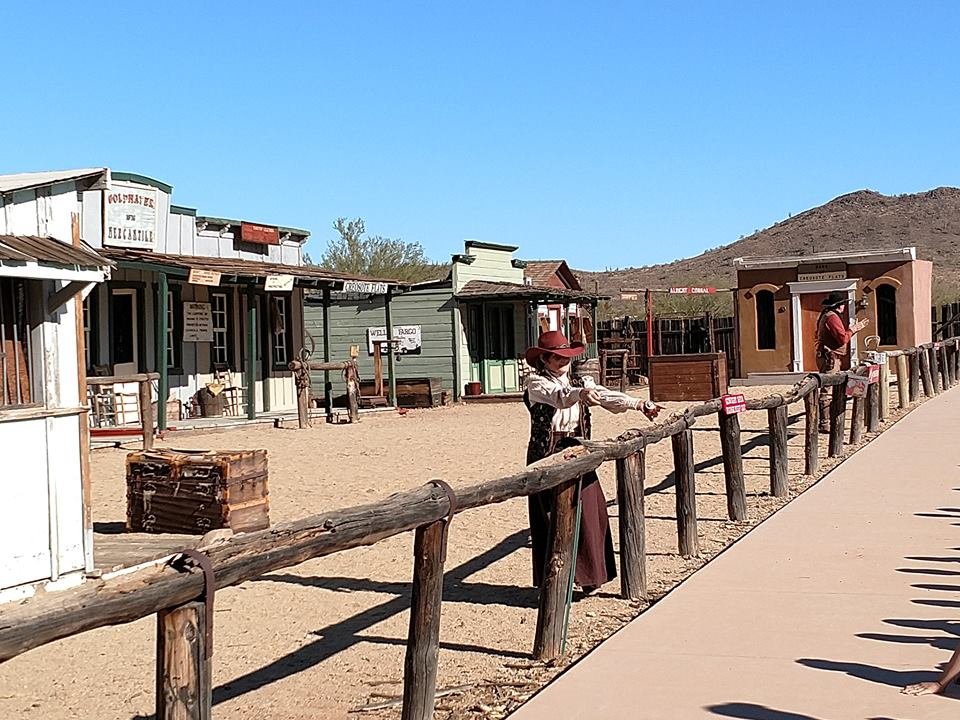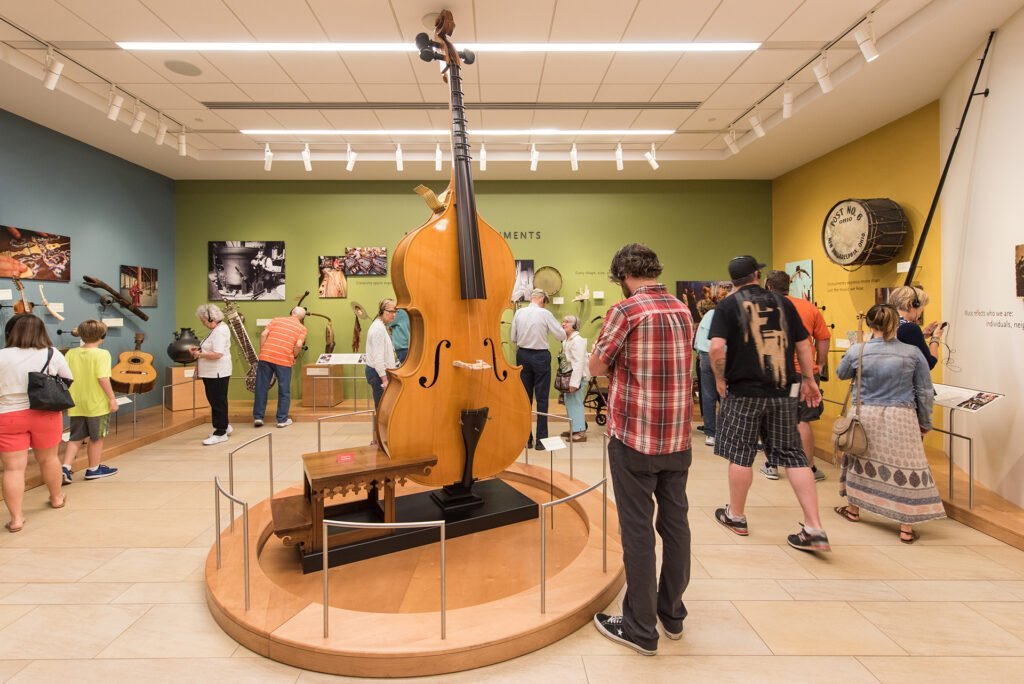
Explore the Wonders of Saguaro National Park Arizona with Arizona City Living:
Nestled in the heart of the Sonoran Desert, Arizona boasts a unique natural treasure that never fails to captivate visitors from around the world – the magnificent Saguaro National Park. Home to the iconic saguaro cactus, this extraordinary park offers a glimpse into the stunning beauty of the desert landscape, rich biodiversity, and the fascinating history and geology of the region. In this blog post, brought to you by Arizona City Living, we invite you to embark on a virtual journey with us as we explore the wonders of Saguaro National Park, Arizona’s beloved desert jewel. Whether you’re planning a visit or simply seeking to deepen your understanding of this remarkable place, our guide will provide you with valuable insights into the park’s attractions, activities, and conservation efforts.
Saguaro Cactus Park:
Saguaro National Park, often affectionately referred to as the “Saguaro Cactus Park,” is home to one of the most iconic and recognizable symbols of the American Southwest – the saguaro cactus. These towering giants are what draw countless visitors to the park each year. The saguaro cactus, with its distinctive arms reaching skyward, is a symbol of the desert’s resilience and endurance. Standing among a forest of saguaros can evoke a sense of wonder and reverence for the natural world.
The saguaro cactus, Carnegiea gigantea, is unique to the Sonoran Desert and plays a vital role in the ecosystem. These cacti can grow to impressive heights, with some individuals reaching up to 50 feet or more. Visitors to Saguaro National Park often find themselves captivated by the sheer size and grandeur of these cacti. They are not only a marvel to behold but also provide critical resources to desert wildlife.
Saguaro National Park History:
The history of Saguaro National Park extends far beyond its establishment as a national park. It encompasses thousands of years of human habitation, exploration, and conservation efforts that have shaped the park’s identity and purpose.
For centuries, indigenous peoples, including the Tohono O’odham and Hohokam, have called the Tucson Basin home. These cultures have deep connections to the saguaro cactus and the desert environment, using them for food, medicine, and cultural ceremonies.
European explorers and settlers arrived in the region in the 17th century, and Spanish missions were established nearby. Over time, the area underwent various changes in ownership, including Spanish, Mexican, and American control.
The late 19th and early 20th centuries saw increased interest in the region’s natural beauty, leading to efforts to protect its landscapes. In 1933, Saguaro National Monument was established to preserve and showcase the iconic saguaro cactus. The monument’s boundaries expanded over the years, culminating in its redesignation as Saguaro National Park in 1994.
Throughout its history, the park has been a site of scientific research, cultural preservation, and outdoor recreation. Its rich history is celebrated through visitor centers, exhibits, and cultural programs that provide insight into the complex tapestry of human and natural history that defines Saguaro National Park.
Saguaro National Park Visitor Center:
For those looking to start their journey of exploration and discovery at Saguaro National Park, the visitor center is an excellent place to begin. Here, you can gather valuable information about the park’s features, pick up maps and guides, and engage with park rangers who are knowledgeable about the area.
Saguaro National Park has two districts: the Tucson Mountain District (west) and the Rincon Mountain District (east). Each district has its visitor center, offering insights specific to the unique landscapes and attractions found within. The visitor centers are educational hubs where you can learn about the park’s flora, fauna, geology, and history.
Saguaro National Park East and West:
Saguaro National Park is divided into two distinct districts – the Tucson Mountain District (West) and the Rincon Mountain District (East). Each district offers a different desert experience.
The Tucson Mountain District is known for its iconic saguaro forests set against a backdrop of rugged mountains. Scenic drives, hiking trails, and viewpoints like the Signal Hill Trail, which features ancient petroglyphs, provide opportunities to immerse yourself in the park’s beauty.
In contrast, the Rincon Mountain District, also known as “Saguaro East,” offers a more diverse landscape with lush desert flora, rocky terrain, and higher elevations. Hikers can explore the park’s extensive network of trails, including the popular Tanque Verde Ridge Trail, which rewards trekkers with breathtaking panoramic views.
Saguaro National Park Hiking Trails:
One of the best ways to experience the desert landscape of Saguaro National Park is by hitting the hiking trails. The park offers a wide range of trails suitable for all levels of hikers, from easy strolls to challenging backcountry adventures.
Hiking in the park allows you to get up close and personal with the saguaro cacti, as well as other desert plants and wildlife. The Desert Discovery Nature Trail is a great option for those looking for a stroll with informative signage along the way.
For more experienced hikers, the Hugh Norris Trail in the Tucson Mountain District and the Tanque Verde Ridge Trail in the Rincon Mountain District offer longer and more strenuous options. These trails reward hikers with sweeping vistas of the park’s desert landscape.
Saguaro National Park Desert Landscape:
The desert landscape of Saguaro National Park is a study in contrasts and adaptation. While the park’s iconic saguaro cacti take center stage, the desert is teeming with a surprising variety of life. Amid the arid terrain, you’ll find an array of desert plants and animals uniquely adapted to the challenging conditions.
The park’s flora includes prickly pear cacti, creosote bushes, and palo verde trees, among others. Many of these plants have developed remarkable survival strategies to thrive in the harsh desert environment. Meanwhile, desert wildlife, such as Gila monsters, roadrunners, and desert tortoises, have evolved alongside these plants, forming a complex ecosystem.
Saguaro National Park’s desert landscape offers a canvas of colors and textures that change throughout the day. The play of light and shadow on the desert floor, the vibrant sunsets, and the star-studded night skies make the park a photographer’s dream.
Exploring the desert landscape of Saguaro National Park provides an opportunity to connect with the natural world and gain a deeper appreciation for the resilience of life in one of the harshest environments on Earth. Whether you’re an avid hiker, a wildlife enthusiast, or simply seeking the serenity of the desert, Saguaro National Park has something to offer every visitor.
Saguaro National Park Wildlife:
Saguaro National Park is not only renowned for its iconic saguaro cacti but also for its diverse and fascinating wildlife. While the desert environment may seem harsh, it is home to a surprising array of creatures that have adapted to its challenges.
One of the most sought-after sightings in the park is the desert bighorn sheep. These magnificent animals are expert climbers and are often seen scaling the rugged slopes of the Rincon Mountains. Birdwatchers are in for a treat as well, with over 200 species of birds recorded in the park, including the colorful vermilion flycatcher and the majestic red-tailed hawk.
One of the most famous desert inhabitants is the Gila monster, one of the few venomous lizards in North America. Despite their fearsome reputation, they are seldom seen and are not considered a threat to humans.
Other desert dwellers you might encounter include coyotes, bobcats, javelinas, and a variety of reptiles and insects. Keep in mind that many animals in the desert are most active during the cooler hours of the day or night, so early morning or evening hikes can provide excellent wildlife viewing opportunities.
Saguaro National Park Flora and Fauna:
Saguaro National Park’s diverse flora and fauna make it a unique and captivating destination for nature enthusiasts. While the park’s most iconic plant is undoubtedly the saguaro cactus, there is a rich tapestry of desert life waiting to be discovered.
The park is home to various species of cacti, including the iconic saguaro, prickly pear, barrel cactus, and cholla. These plants have evolved remarkable adaptations to survive in the arid desert environment, such as water storage and spines for protection.
In addition to cacti, the park boasts a wide range of desert flora. Palo verde trees, creosote bushes, and mesquite trees dot the landscape, providing shelter and sustenance for local wildlife. Springtime in the park is particularly special, as wildflowers burst into bloom, painting the desert with vibrant colors.
As for wildlife, Saguaro National Park offers a glimpse into the incredible adaptations of desert animals. Apart from the desert bighorn sheep, the park is home to Gila monsters, roadrunners, rattlesnakes, and a variety of birds. Observing these creatures in their natural habitat is an unforgettable experience that highlights the resilience of life in the desert.
Saguaro National Park Camping:
For those who wish to immerse themselves in the beauty of Saguaro National Park, camping is an excellent option. There are two campgrounds within the park: Rincon Mountain District (east) and Tucson Mountain District (west).
The Rincon Mountain District campground, known as the Rincon Mountain Visitor Center Campground, offers a peaceful and remote camping experience. With only nine sites, it provides a quiet retreat where you can enjoy the sights and sounds of the desert. Keep in mind that this campground has limited amenities, so it’s ideal for those seeking a more primitive experience.
On the western side of the park, the Tucson Mountain District campground called the Tucson Mountain District Visitor Center Campground, offers 120 sites and more facilities, including restrooms and drinking water. This campground is a great choice for those looking for a more developed camping experience while still being surrounded by the beauty of the Sonoran Desert.
Both campgrounds provide an opportunity to witness the desert’s transformation from day to night, with its incredible sunsets and stargazing opportunities. Be sure to make reservations in advance, as these campgrounds can fill up quickly, especially during the cooler months when camping is most popular.
Saguaro National Park Photography Spots:
Saguaro National Park offers an abundance of photography opportunities for both amateur and professional photographers. The desert landscape, with its iconic saguaro cacti, dramatic rock formations, and ever-changing lighting, provides a captivating backdrop for capturing the beauty of the Southwest.
For sunrise or sunset photography, popular spots include the Gates Pass Overlook in the Tucson Mountain District and the Mica View Loop in the Rincon Mountain District. These vantage points offer stunning vistas and the chance to capture the desert bathed in the warm hues of the sun’s first or last light.
During the day, hiking trails like the Valley View Overlook Trail and the Tanque Verde Ridge Trail provide opportunities to photograph the park’s diverse flora and fauna. Keep an eye out for saguaros, wildflowers, and wildlife.
For those interested in capturing the night sky, Saguaro National Park is a designated International Dark Sky Park, making it an ideal location for astrophotography. The absence of light pollution allows for breathtaking shots of the Milky Way and celestial phenomena.
Saguaro National Park Climate:
Understanding the climate of Saguaro National Park is essential for planning a visit to this unique desert landscape. The park experiences a classic Sonoran Desert climate, characterized by hot summers and mild winters.
Summers in the park can be extremely hot, with daytime temperatures often exceeding 100 degrees Fahrenheit (38 degrees Celsius). It’s crucial to stay hydrated, wear sun protection, and plan outdoor activities for the cooler morning or evening hours. Thunderstorms are common during the summer monsoon season, typically from July to September, so be prepared for sudden weather changes.
Winters are more temperate, with daytime temperatures ranging from the 60s to 70s Fahrenheit (15 to 25 degrees Celsius). This season is ideal for hiking and exploring the park, as the weather is more comfortable. However, nights can be chilly, so it’s advisable to bring layers if you plan to be outdoors after dark.
Spring and fall are pleasant seasons to visit, with milder temperatures and less extreme weather. These seasons are popular for camping and hiking, as the park’s flora comes to life with colorful wildflowers in the spring and pleasant conditions prevail in the fall.
Keep in mind that the desert environment can be dry, so it’s important to stay well-hydrated and practice Leave No Trace principles while exploring the park. Understanding and respecting the climate will ensure a safe and enjoyable visit to Saguaro National Park, regardless of the season.
Saguaro National Park Guided Tours:
Exploring Saguaro National Park on your own can be a rewarding experience, but guided tours offer a deeper understanding of the park’s natural and cultural significance. Whether you’re a first-time visitor or a seasoned enthusiast, guided tours can enhance your appreciation of this unique desert ecosystem.
One of the key benefits of guided tours is the expertise of the park rangers and naturalists who lead them. These knowledgeable guides provide valuable insights into the park’s flora and fauna, geology, and history. They can identify plant and animal species you might miss on your own and explain the intricate relationships that sustain life in the desert.
Guided tours in Saguaro National Park come in various forms, including hikes, tram tours, and evening programs. Hiking tours take you on trails of different difficulty levels, allowing you to explore the park’s stunning landscapes while learning about its ecological processes.
Tram tours, such as the Cactus Forest Loop Drive, provide a comfortable and informative way to experience the park’s beauty. These tours are especially convenient for those with limited mobility or time constraints.
Evening programs often focus on astronomy, taking advantage of the park’s designation as an International Dark Sky Park. Stargazing tours offer a chance to observe celestial objects with telescopes and learn about the desert’s night sky.
Participating in guided tours not only deepens your connection to the park but also supports its conservation efforts. Tour fees often contribute to park maintenance and educational programs, ensuring that future generations can continue to enjoy and appreciate Saguaro National Park.
Saguaro National Park Conservation Efforts:
Conservation lies at the heart of Saguaro National Park’s mission. The park’s unique desert ecosystem faces various challenges, including habitat degradation, invasive species, and the effects of climate change. To address these issues, the National Park Service and its partners have undertaken several important conservation efforts.
One of the primary goals of Saguaro National Park’s conservation efforts is the preservation of its namesake species, the saguaro cactus. Saguaro populations face threats from climate change, habitat loss, and diseases like bacterial necrosis. Park scientists monitor saguaro health and collaborate with research institutions to better understand these challenges and develop strategies for long-term preservation.
Invasive species pose a significant threat to the park’s native flora and fauna. Buffelgrass, in particular, has become a major concern. This non-native grass increases the frequency and intensity of wildfires, which can have devastating effects on the park’s ecosystem. Conservation efforts include ongoing buffelgrass removal and restoration of native vegetation.
Climate change is altering the park’s environment, with rising temperatures and changing precipitation patterns affecting desert ecosystems. To address these challenges, the National Park Service is working to develop climate change adaptation strategies and reduce the park’s carbon footprint.
Education and outreach are essential components of Saguaro National Park’s conservation efforts. The park offers programs and resources to engage visitors and local communities in conservation initiatives. These efforts include citizen science projects, volunteer opportunities, and educational programs that inspire a deeper appreciation for the park’s natural and cultural heritage.
By supporting Saguaro National Park and its conservation endeavors, visitors contribute to the preservation of this remarkable desert landscape. Whether through financial contributions, volunteer work, or adopting sustainable practices, individuals can play a vital role in ensuring that Saguaro National Park remains a vibrant and protected ecosystem for generations to come.
Saguaro National Park Geology:
The geological history of Saguaro National Park is a testament to the dynamic forces that have shaped the Sonoran Desert over millions of years. While the park’s iconic saguaro cacti are its most recognizable feature, the underlying geology has played a crucial role in creating the diverse landscapes that visitors enjoy today.
The park’s geology is dominated by two mountain ranges: the Tucson Mountains in the west and the Rincon Mountains in the east. These mountain ranges are separated by the Tucson Basin, a geologic depression filled with sedimentary rock layers.
The Tucson Mountains are home to rugged, rocky terrain composed of ancient volcanic and sedimentary rocks. These rocks provide a stark contrast to the Rincon Mountains, which are characterized by their rugged granite peaks. The Rincons are a geologic wonder, with the prominent Mount Rincon rising to an elevation of over 8,000 feet (2,438 meters).
The saguaro cacti, the park’s iconic residents, depend on the specific geology of the region. The saguaros thrive in areas with well-drained soils, often taking root in the gaps between rocky outcrops. This adaptation allows them to access water during brief periods of rainfall while avoiding root rot in saturated soil.
Saguaro National Park’s geologic history is also evident in the exposed rock formations found throughout the park. Jumbled rock piles, known as “talus slopes,” are a result of erosion and the natural breakdown of rocks over time. These slopes are often home to a variety of desert plants and animals.
Visitors interested in the park’s geology can explore its diverse rock formations while hiking the numerous trails. Many trails offer interpretive signs that explain the geological features you’ll encounter along the way. By understanding the park’s geologic history, you’ll gain a deeper appreciation for the stunning landscapes that have evolved over millennia.
Conclusion:
As we conclude our virtual tour of Saguaro National Park, we hope that you’ve gained a deeper appreciation for this desert oasis’s beauty, history, and importance. From the towering saguaro cacti to the thriving wildlife and the dedicated conservation efforts, Saguaro National Park remains a testament to the extraordinary wonders of the natural world.
Whether you’re planning a visit to the park, hoping to capture its essence through photography, or simply intrigued by the desert’s unique ecology, Saguaro National Park has something to offer everyone. Its hiking trails, visitor centers, and guided tours provide opportunities to connect with the desert landscape and learn about its rich history and geology.
As Arizona’s living resource guide, Arizona City Living will continue to bring you valuable insights into the state’s natural and cultural wonders. We encourage you to explore Saguaro National Park with a spirit of curiosity and conservation, and we look forward to sharing more of Arizona’s incredible destinations and experiences with you in the future. Until then, may your journeys be filled with discovery and appreciation for the beauty of our great state.




